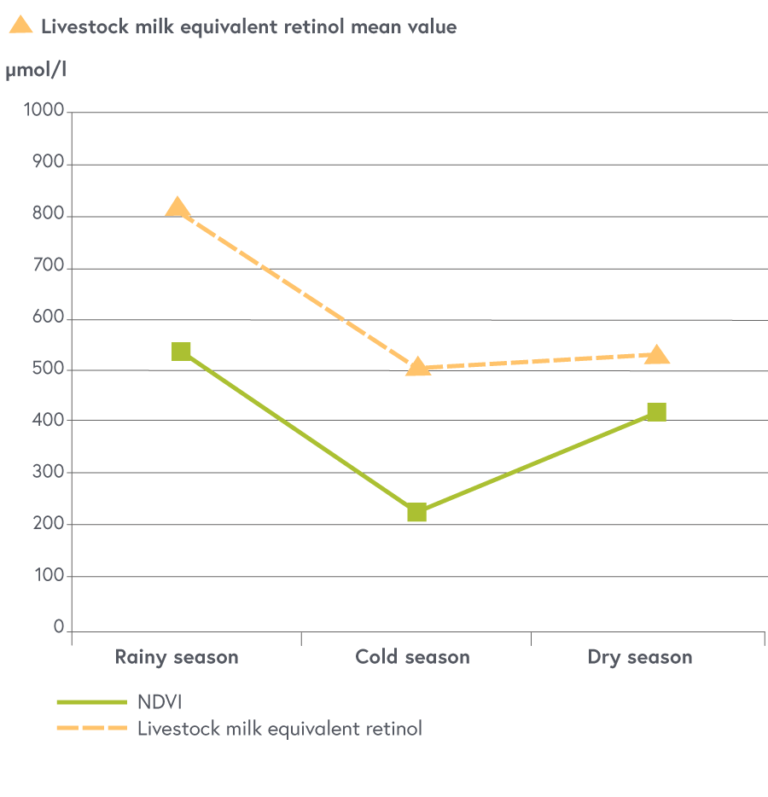Home / Healthcare & Medicine / Veterinary Science / One Health: Connecting Humans, Animals and the Environment / Vitamin A deficiencies of pastoralists
This article is from the free online
One Health: Connecting Humans, Animals and the Environment


Reach your personal and professional goals
Unlock access to hundreds of expert online courses and degrees from top universities and educators to gain accredited qualifications and professional CV-building certificates.
Join over 18 million learners to launch, switch or build upon your career, all at your own pace, across a wide range of topic areas.

 Chart one: mean values of the Normalised Difference Vegetation Index (NDVI) for grazed pastures
Chart one: mean values of the Normalised Difference Vegetation Index (NDVI) for grazed pastures  Chart two: livestock milk retinol mean values
Chart two: livestock milk retinol mean values Chart three: proportion of who consumed more than half a litre milk per day
Chart three: proportion of who consumed more than half a litre milk per day Chart four: proportion of men and women who are not retinol deficient
Chart four: proportion of men and women who are not retinol deficient





